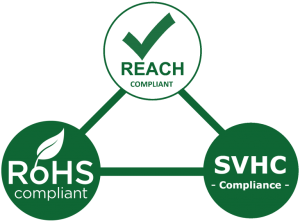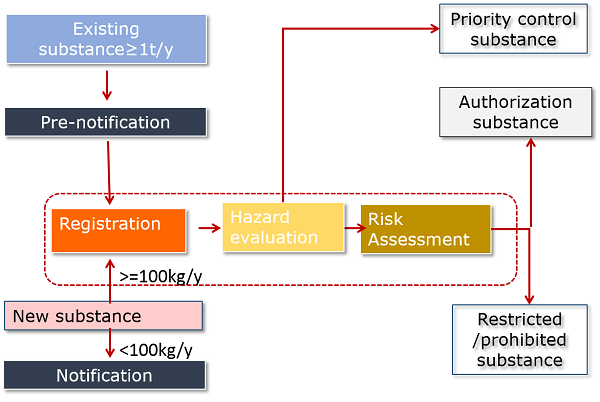———-High performance delivered – Explore our services!———-
COMPLIANCE ASSESSMENT
Review of substance portfolio and regulatory status assessment
>>>
We will perform a thorough substance inventory and identification (CAS, EINECS, IUPAC naming, etc.) of the client’s products. This includes review of all chemicals placed on the market, or substances used in products (or in the production process), gather information on its properties, assess volumes, specific uses, and concentrations, and, for each substance, determine its regulatory status. Based on this information we will provide an analysis and individual evaluation of obligations under REACH, CLP, Seveso, Biocide or WEEE/RoHS regulations and directives.
REACH REGISTRATION
Authoring and Submission of dossiers for REACH registrations
>>>
RRC Group Consulting will design the right registration strategy to achieve full compliance for our client’s REACH (EC/1907/2006 regulation) obligations. We will assess all data requirements, evaluate data and prepare IUCLID registration dossiers. For non-EU manufacturers RRC Group can also perform the role of an Only Representative; for importers or EU manufacturers, we can act as your Third-Party Representative. For phase-in substances that have not been preregistered and all non-phase-in substances an inquiry process at ECHA will be performed. If applicable a late pre-registration will be submitted to benefit from an extended deadline for REACH registration in June 2018. We will join the Substance Information Exchange Fora (SIEF) and collect existing data. All information for REACH registration will be brought together in IUCLID, the registration dossier will be created, and submitted to ECHA via REACH-IT.
Read more about the REACH registration process.

CLP IMPLEMENTATION
Full service for the Classification, Labelling and Packaging of Substances and Mixtures
>>>
Supplier of hazardous products must classify, label and package their substances or preparations in accordance with the CLP (EC/1272/2008) regulation before placing them on the European market. Arcerion provides a full service for the legal classification of products according to CLP as well as performing appropriate CLP notifications to ECHA. Based on the classification, Arcerion offers the creation of CLP compliant product labels – including product identifiers, hazard and precautionary statements (H- and P-phrases), signal words, hazard pictograms and supplemental information – like transport information pursuant to ADR, DOT, IATA and IMDG.
ONLY REPRESENTATIVE
Tasks of REACH Only Representative pursuant to REACH art. 8
>>>
We offer a comprehensive REACH only representative service (pursuant to REACH art. 8) for non-community manufacturers, formulators or producer of products. With this, RRC Group takes over the tasks and responsibilities of importers for complying with REACH. RRC Group’s REACH only representative service simplifies access to the EEA (Euorpean economic area) market for the client’s products, secures the supply and reduces obligations and expenses for the client’s European customers. By appointing an only representative the client may act like a European supplier of products with to respect to REACH.
DOWNSTREAM USER OBLIGATIONS
Creation and submission of downstream user reports acc. to REACH art. 38
>>>
We offer a comprehensive service for downstream users with regard to all obligations that REACH burdens on them.
Downstream users may view supplier registration(s) as the answer to all their REACH obligations. In reality this is not the case. Title V of REACH deals exclusively with downstream users, imposing two significant obligations.
They must operate within the scope of a chemical safety assessment (CSA) that has been either prepared by themselves or the registered supplier (art. 37). Secondyl, they must report information to ECHA under certain circumstances (art. 38).
Additionally, the downstream user may have further REACH obligations under:
- art. 31 – requirements for the SDS;
- art. 32 – communication of information down the supply chain (SDS not required);
- art. 33 – communication of information on substances in articles;
- art. 34 – communication of information on substances and mixtures up the supply chain;
- art. 35 – workers’ access to information
SVHC DUTIES
Managing duties for products containing substances of very high concern (SVHC)
>>>
To assist clients in meeting requirements for products that contain substances of very high concern (SVHC) through the supply chain, RRC Group offers the SVHC compliance service which includes:
• Full substance inventory
• Periodic SVHC identification
• Generation of templates for formal communication letters to EU clients
• Authoring of CLP compliant safety data sheets (MSDS)
Suppliers of articles which contain SVHC in a concentration above 0.1 % (w/w) have to provide sufficient information to allow safe use of the article to their customers, or upon request, to a consumer within 45 days of the receipt of the request. The identification of a substance as SVHC and its inclusion in the candidate list, is the first step toward the authorisation procedure. Irrespectively, following such inclusion companies have immediate legal obligations linked to the listed substance on its own, in preparations and articles pursuant to REACH art. 7(2), 31(1) and 33.
To check the current candidate list of SVHC follow this link.

CERTIFICATE OF COMPLIANCE
Confirmation of compliance for specific products with regard to control
>>>
On request, RRC Group – as a certified and independent reviewer and expert organization – will examine the compliance of our client. We offer certificates of compliance for specific products – whether it is a preparation, a substance, or an article – with regard to European chemical control legislation like REACH, CLP, Seveso or Biocide directives and regulations. The certificates provide assurance and traceability to customers that a product has been reviewed by a competent third party for compliance.
MSDS AUTHORING
Creation of Material Safety Data Sheets compliant to REACH and CLP
>>>
RRC Group provides the creation of material safety data sheets (MSDS) compliant to art. 31 of regulation (EC) No 1907/2006 (REACH). MSDS are the main tool for ensuring that suppliers communicate enough information along the supply chain to allow safe use of their substances and mixtures. Safety data sheets include information about the properties of the substance (or mixture), its hazards and instructions for handling, disposal and transport and also first-aid, fire-fighting and exposure control measures. This information can be found in the main body of the safety data sheet or in the annexed exposure scenarios (where applicable). The requirements for the compilation of the safety data sheets are specified in Annex II of REACH. A supplier needs to provide a safety data sheet in the following cases:
- a substance or mixture classified as hazardous according to CLP.
- a substance that is persistent, bioaccumulative and toxic (PBT) or very persistent and very bioaccumulative (vPvB), as defined in REACH (Annex XIII), or
- a substance is included in the candidate list of substances of very high concern.
SUPPLY CHAIN SERVICES
Securing product compliance along the complete supply chain
>>>
We assume the obligation of performing the communication along the supply chain of our client’s products with respect to the requirements of relevant chemical control legislation.
Communication with suppliers
Effective communication between downstream users and suppliers ensures that relevant information is provided in the supply chain. Downstream users may provide information regarding their uses to their suppliers, at least one year before the relevant registration deadline. Registrants can then include these uses in their chemical safety assessment. Suppliers should provide information on the conditions of safe use of hazardous substances to downstream users. Downstream users may, in turn, contact the supplier if the conditions of use that are described do not match their actual conditions of use. Downstream users need to inform their supplier if the recommended risk management measures are inappropriate. When downstream users become aware of new hazard information, they should also inform their immediate suppliers without delay.
Communication with customers
Safety data sheets (SDSs) are an important method for communicating information on the safe use of hazardous substances and mixtures to downstream users and distributors.
Exposure scenarios (ESs) give information on how the exposure of workers, consumers and the environment to substances can be controlled to ensure their safe use. When required, exposure scenarios are provided as an annex to the safety data sheet. Supplier of a hazardous mixture, have to communicate information on its safe use to your customers. This should include relevant information on operational conditions and risk management measures from the exposure scenarios received for the substances in the mixture.
